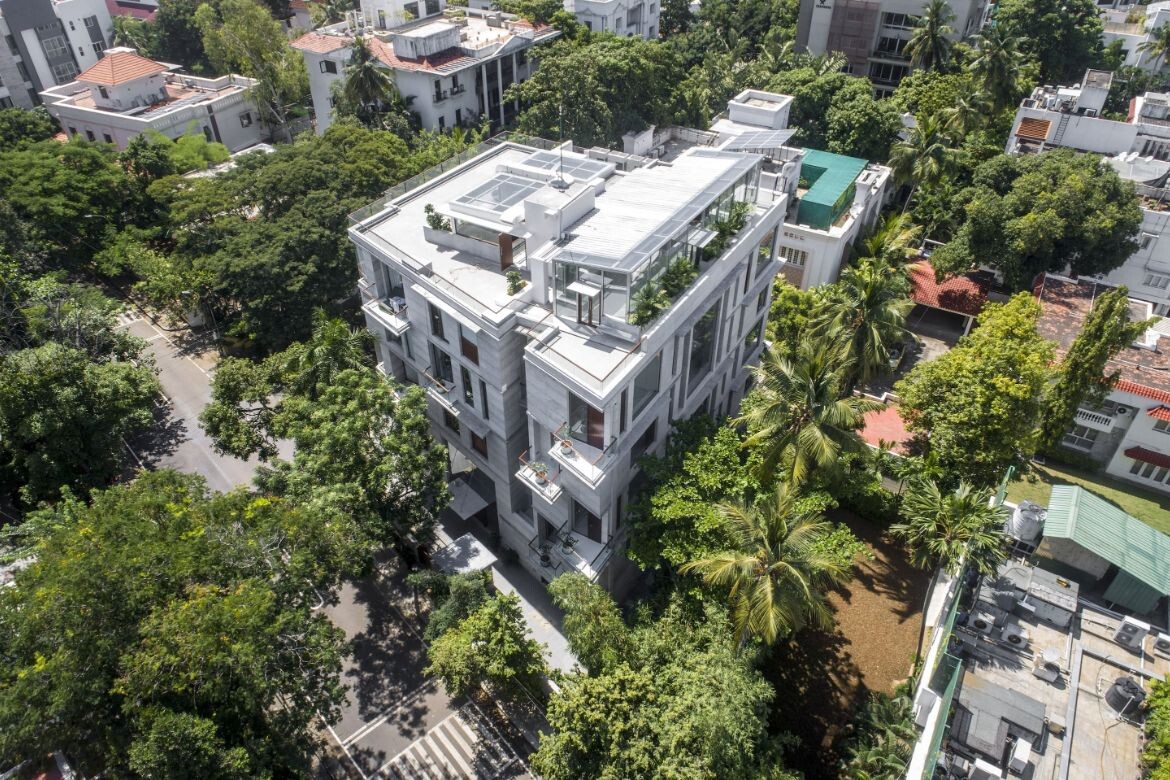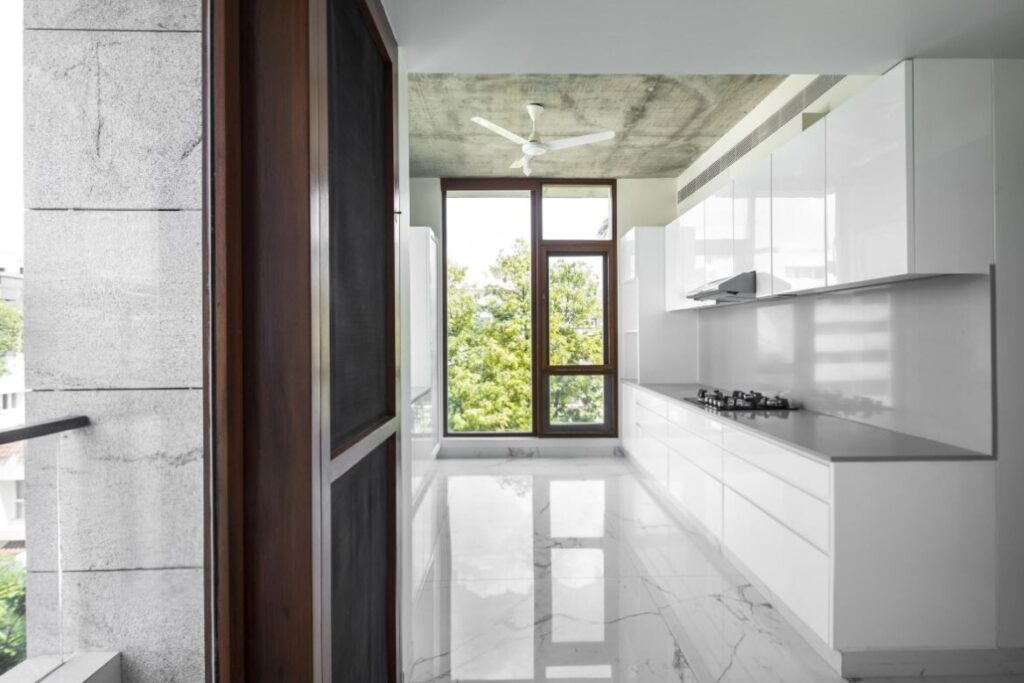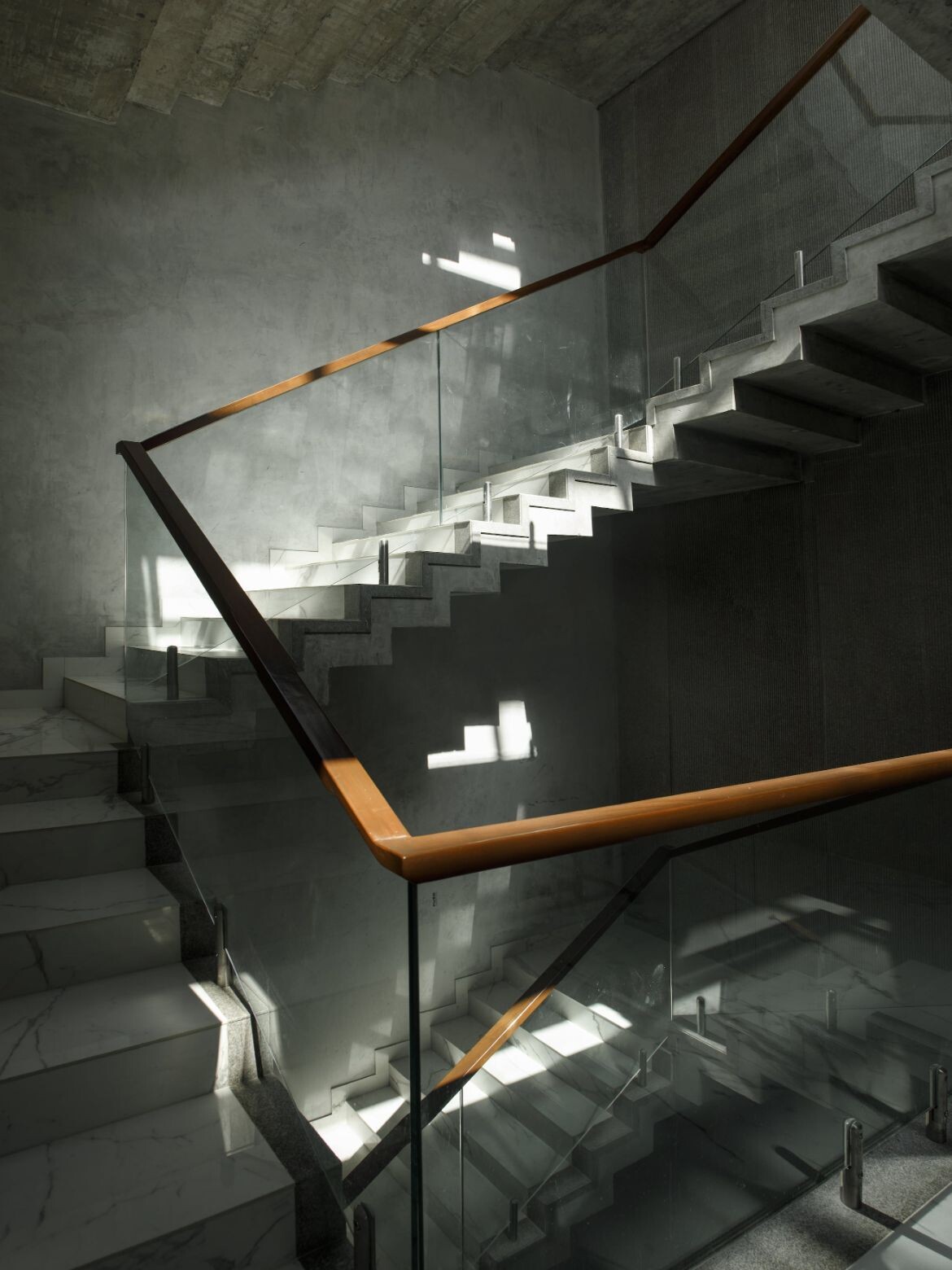SJK Architects is an award-winning practice based in Mumbai. For this project, however, the focus is in Chennai, where Boat Club Apartments combine a sense of communal living with privacy and independence.

May 22nd, 2023
Two of India’s most important cities, located on opposite sides of the country — that’s the gap that SJK Architects has bridged in completing the Boat Club Apartments in Chennai. As a practice that works right across the spectrum of architecture, interior design and master planning, it was well-suited to the task. Founded in 1990 and led by partners Shimul Javeri Kadri, Vaishali Mangalvedhekar, Sarika Shetty and Roshni Kshirsagar, it has completed projects all over India.

In fact, any project of theirs takes its initial cues from place and context, looking into local idiosyncrasies of geography, history and culture. At the Boat Club, climate was a particularly important factor. The client brief here, for example, noted that the city of Chennai is “hot, dusty and mosquito-ridden.”
The challenge for these luxury apartments, then, became one of connecting “people to nature, to themselves and to each other while blocking out heat and dust and malaria,” according to the architects.

With climate providing a number of challenges in India — not least periods of extreme heat and heavy rain — the designers turned to both modern and traditional methods. Drawing on the classic homes of Chennai, for instance, there is an emphasis on transitional spaces between inside and outside. A particularly notable example is the use of chajjas, a type of overhang or horizontal projection that provides respite from the heat and humidity. Passive design strategies focusing on ventilation and light have been central to the scheme throughout.
Tying the whole building together is a central atrium that maintains access to sunlight. The idea is that these partially communal circulation spaces will be pleasant to use and encourage some level of neighbourliness and interaction.
Related: Taliesyn Studio in Bengaluru

As for the layout of the core residential spaces, the architects faced a spatial challenge in the form of adhering to the traditional architectural guidelines of Vastu Shastra. Master bedrooms, for instance, were to be located on the south-west corner, further intensifying the need to think about ventilation and shade.
Stepping back towards those intermediary spaces between indoors and outdoors, however, the balcony design is what sets this project apart. While city regulations stipulate four feet-deep balconies, SJK has carved out an additional depth of the same distance, doubling the balcony size so that a shaded area can be enjoyed for a range of activities.

Aesthetically speaking, the project is certainly striking in its materiality. The visitor is struck by the bold, single-material surfaces of concrete or stone. The facade of the building is a dry stone cladding of Sadarhalli grey granite, a finish that is also used throughout the design. This stone cladding also forms part of the approach to thermal comfort by insulating the building, creating a 40mm air gap and a temperature drop of at least four degrees Celsius between outside and inside.
SJK Architects has deftly moved between the traditional and the modern to create a highly desirable slice of residential architecture in contemporary urban India.
SJK Architects
sjkarchitects.com
Photography
Niveditaa Gupta




We think you might also like this story on Forest of Chintz by SJK Architects.
INDESIGN is on instagram
Follow @indesignlive
A searchable and comprehensive guide for specifying leading products and their suppliers
Keep up to date with the latest and greatest from our industry BFF's!

Welcomed to the Australian design scene in 2024, Kokuyo is set to redefine collaboration, bringing its unique blend of colour and function to individuals and corporations, designed to be used Any Way!

Architect, designer and craftsman Adam Markowitz bridges the worlds of architecture and fine furniture, blending precision, generosity and advocacy to strengthen Australia’s craft and design community.

With its latest outpost inside Shanghai’s bustling Hongqiao International Airport, HARMAY once again partners with AIM Architecture to reimagine retail through colour, movement and cultural expression.
The internet never sleeps! Here's the stuff you might have missed

Rising above the new Sydney Metro Gadigal Station on Pitt Street, Investa’s Parkline Place is redefining the office property aesthetic.

Opening in October 2025, The Standard, Pattaya Na Jomtien brings together ONION, DIN Studio, Studio Lupine and Verena Haller to create a sculptural modernist retreat where art, architecture and coastal culture meet.